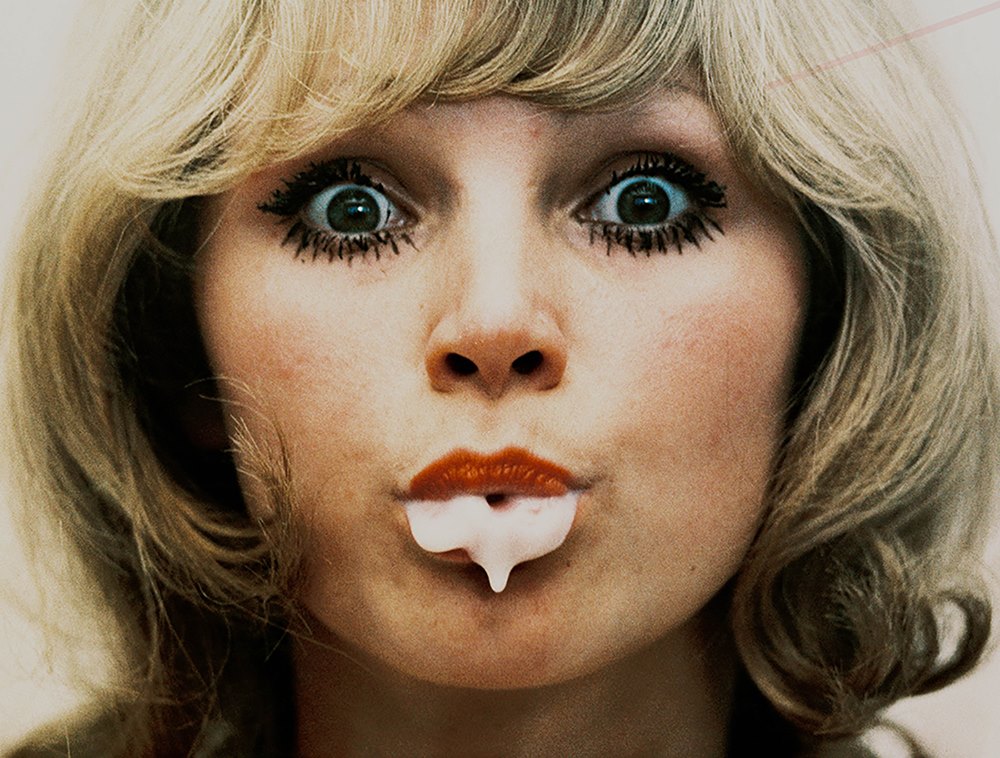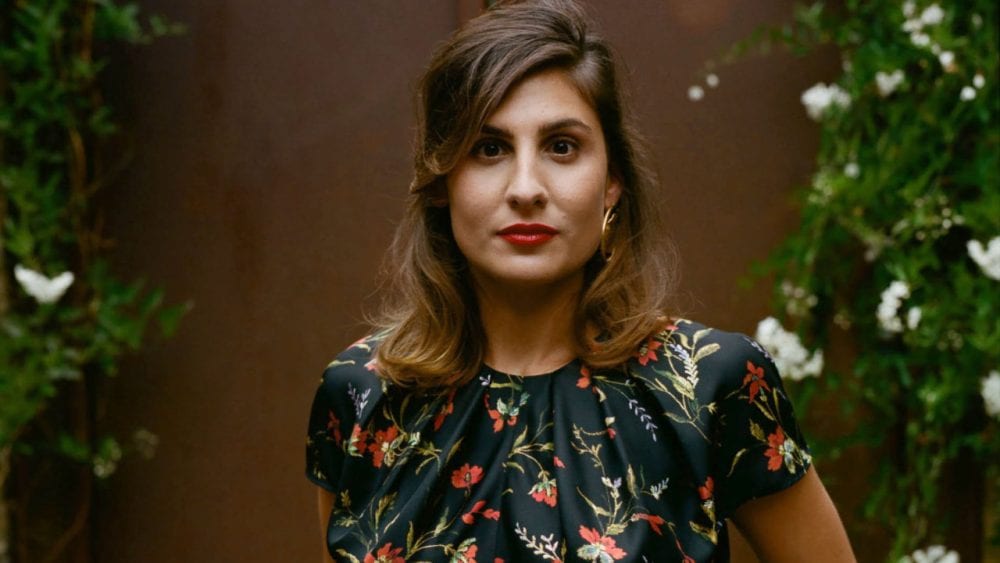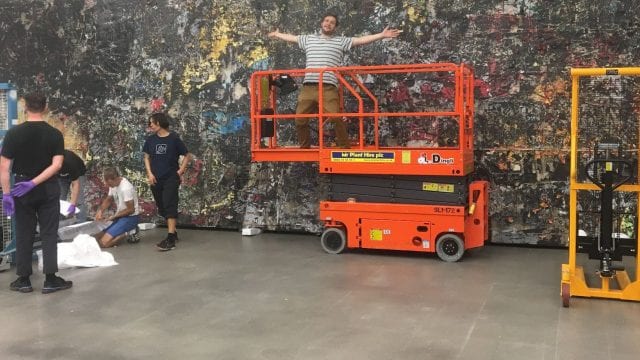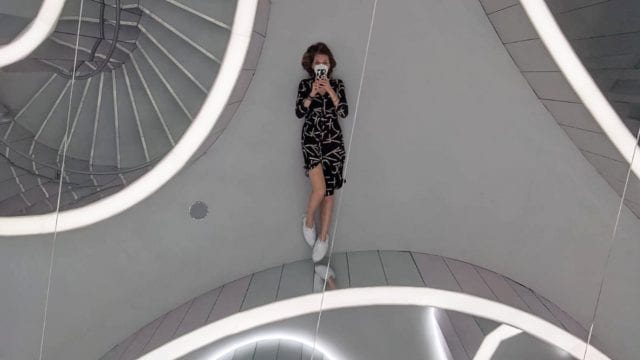Marisa Bellani is the founder and creative director of Roman Road, a contemporary art gallery in London. The gallery has recently redefined itself with a more fluid and ethical approach, becoming a platform for collaborative exhibitions in 2019. Marisa has been running the company since 2013, following and fostering notable projects and dealing with artists worldwide.
Roman Road has established a qualitative and thematic programme and realised the creation of a research cell and Roman Road Journal in 2018, an online platform dedicated to publishing articles and exploring art, science, technology, anthropology and literature. Marisa has completed two master degree courses, first at the Institut d’Études Supérieures des Arts and subsequently at Sotheby’s Institute of Art. She has held a seat and became the youngest member of one of the Tate’s Acquisition Committees and regularly participates in panel discussions and portfolio reviews, and gives talks at art universities.
What were your first interactions with art and what got you interested in working in the art world?
My first interactions with art happened when I was little. My best friend’s mother was an art history teacher in a high school in Liege. Every Wednesday afternoon, she would take us to see museums, sometimes we’d go to Bruges and other cities. She would show us around all kinds of museums, not just art, but natural history museums, for example. And then, when my mum had more time when I was a teenager, we travelled a lot to Florence, Venice, and other cities, and I was discovering art in different locations. She was very thorough with reading books, having museum guides with us, so we were not just passively looking at art, but with a lot of explanations.
What got me into working with art was actually a lot of patience. Because when I had to choose what I wanted to study, I wanted to study Art History, but my mum wasn’t keen, so I did Law. When I graduated, I said, well, now I’m going to go to Paris to study Art finally. After that, I came to London to continue my studies and do an internship. I did an MA in Photography at Sotheby’s, while my first MA was in Art and Business. Once I finished studying, I opened my gallery Roman Road in 2013, initially as a project space.
What spurred you to open your own gallery and work particularly with emerging artists?
I was visiting many exhibitions in Paris and London, doing a lot of research to catch up and became interested in young talents. I went to art fairs like The Other Art Fair, which is for independent artists and lots of degree shows. This allowed me to have a direct interaction with artists. It was really insightful to learn directly from the person making the artwork, and I really enjoyed supporting artists. Initially, I wanted to start a collection, and around the same time, I joined Tate as a member of their Acquisition Committee. I was buying art from artists, discussing the work with them, thinking how best to frame it and present it. That’s basically what inspired me to open my own gallery so that I could share my art discoveries with others. Each discovery was different. For example, once I first saw Natalia LL’s work in an exhibition on Pop Art at the Tate, I knew I wanted to work with her one day. By chance, two Polish women came by my booth at Photo London, and I mentioned to them that Natalia LL was one of my favourite Polish artists, and they knew her! It was a bit like a manifestation: you think of it, and the opportunity arises. At the time, not many people in the UK knew her work, even though she was a well-known feminist artist in Poland.

Since 2020 you have been working in partnership with the Columbia hotel in West London, developing a versatile, non-traditional arts programme, including residencies and exhibitions. How did the partnership and the art programme develop?
At the start of the pandemic in March 2020, I wasn’t sure what to do, so I started having many conversations with artists and recording the interviews and broadcasting them through Roman Road journal and on Instagram. I was genuinely interested in how everyone was doing in these new circumstances. An artist friend introduced me to Joshua Fresco, the director of the Columbia hotel. His vision was to integrate art in the hotel and to create space for artists’ studios. Two weeks later, he called and asked me to join, so I started to run the programme. I organized the first residency and curated the first exhibition within a month! I felt so proud. I didn’t know I could do it in such a short time.
How did the idea of residencies develop? How is the programme financed?
I think it was through trial and error, as it was the first time for me. I have experience working with artists, and I was able to get in touch with some that have been on residencies in the past and get an idea of what it was like for them, what they liked and what they didn’t. Josh was giving me feedback as well, as he was going to finance the residency. It was interesting to work with him, as he is more business savvy, so we were having discussions on how the project can be viable.
I publicized the open call for the residency through the Roman Road newsletter, Instagram and word of mouth, and we received 80 applications.
In our first residency in July, 7 artists were given a studio space on the hotel’s lower ground floor for 6 weeks and each of them was given a budget for materials. At the end of the residency, we did an exhibition, which was also a selling show so that they could make money out of sales, and then in exchange, they would leave one work for the hotel’s collection.
What criteria have you used to select the artists?
Initially, I simply started organizing the applications just into those that followed application guidelines and those that didn’t. Ignoring the guidelines didn’t mean that you won’t be selected, but you need to be very objective in the selection when you have many applications. It was about making sure that everyone is represented and that there is diversity within the medium that the artists worked with. We wanted to have at least one photography artist, and we also selected a writer. It was important to have diversity in age. In the first residency, we had artists between 20 and 45 years old.
What was the feedback from the artists?
The main feedback from artists was about collaboration. I wanted to see what would happen when you mix artists from different backgrounds, age groups and skillsets. It was amazing to see how artists loved exchanging views and learning from each other, so I think it would be beneficial to have more of this kind of mixed group collaborations. Throughout the 6 weeks, they started to see the benefit of having shared studios with different practices. And this is really something I believe in, as opposed to what’s happening in art schools, where they segment the departments by medium, where you have the painting department that thinks they’re the best. Then at the bottom, you’ve got the design and everything else in between. At the end of the day, it’s a gift or skill that you have, you might be more prone to painting, or design or video, but I don’t think there’s a need to divide them or rank them.
The pandemic brought many challenges. What were some of the challenges that you and the artists faced? Has it changed the way you work?
I think the main challenges were logistical for the hotel in particular. Suddenly, there were a lot of rules and a lot of discussions. For artists during the first lockdown, it became a nightmare to receive materials which in turns slowed the work process, working from home, adapting to a new setting. Most of them, especially painters, reduced the size of their paintings because at home, they had less space.
How do you think the experience of art changes when it’s displayed in a none-white-cube context?
What’s particular about The Columbia is that you have different settings. There’s art in the guest rooms, in the lounge and in bar areas. The lobby feels more industrial and close to a white cube with an edge. You have a dedicated gallery space, which is called The Bakery and the studios as well. One of the lounge rooms on the ground floor, we named The Artist’s Room, which I took from Tate’s idea of artist rooms, where one artist is shown for a period of time. There’s a focus on one artist’s body of work for a period of three months, and we also produce a catalogue with an essay. In the bar area, we decided to focus on photography, featuring one artist at a time. This multiplicity of spaces and different artists is advantageous because it makes people’s trip more worthy than to come and see one artist or one show at a time. In this context, they can be curious to explore, and when they go downstairs to the studios, they can talk to artists and discover work they might want to buy. I understood that this is also the advantage that bigger galleries have over young (smaller) galleries being able to offer different experiences in different spaces simultaneously, not just one show – there’s a constant appeal.
What are some of the changes that you have observed in the art world since you first began working within it?
I started to study art in 2008, which is the year that everything changed (due to the economic crisis). I remember when I opened the gallery, I didn’t think that a collector could also be a dealer. Yet, there was a moment where collectors became dealers, buying works and reselling or ‘flipping’ them, to be a collector became like a business. Around 2010 the consensus was that you would buy a work, you wouldn’t resell it a year later. Otherwise, you’d never be able to buy anything from the same gallery again. You’d be blacklisted. But this has changed. Had I known this back then, I probably wouldn’t have opened a gallery and instead continued to collect. Now you also have NFTs (non-fungible tokens), where the whole point is to make money out of art.
There was also a proliferation of art fairs and biennales in the last decade, all of a sudden, there were hundreds, and the pace of travelling became non-stop. However, I miss this now and the quality of the interactions you could have with people during such events.
Do you foresee any shifts in the future for art?
I see (commercial) galleries becoming more and more redundant, even the big ones in the long term, not in the next five years, maybe in 50 years, because artists want to become more independent (rather than rely on representation by a gallery). Such artists like Picasso, Jeff Koons, Damien Hirst, Andy Warhol have demonstrated that you can be an artist, an entrepreneur and a business. The massification of production wouldn’t diminish your art’s value, which is completely opposed to the market theories that came before. Nowadays, you can be an artist and an entrepreneur.
With platforms such as Nifty Gateway for NFT digital art, artists can sell their work directly. This doesn’t mean that the ‘middle man’ will disappear, but we’d need to start thinking of a different way to be an art agent, and this would mean having an ongoing discussion with the artist, asking them what they need and want. We also need to think of how an artist or their work is being validated in the market and what that means. Currently, there are 4 main options: museum exhibition, representation by a gallery, acquisition by a well-known collection, and publication, but this can change. Perhaps institutional validation will change as museums are often funded privately, which means that wealthy donors or board members influence the works that museums accept for donations. Tate Britain was created from the collection of one person, Henry Tate.
Neuroaesthetics is a field of research by scientists such as the neurobiologist Semir Zeki or George Mather that started around 10-15 years ago. Anna Souter and I did some research of our own to understand better why artwork is perceived to be good and how the brain reacts to it. I firmly believe neuroscience is the key to understanding the perception of art and its impact on the brain while using very objective criteria. I really don’t think that the appreciation of art is subjective as I’ve never believed in art’s subjectivity. I have this idea of art as something more objective then people want to admit. Art is still very elitist as not everyone is exposed to art.





